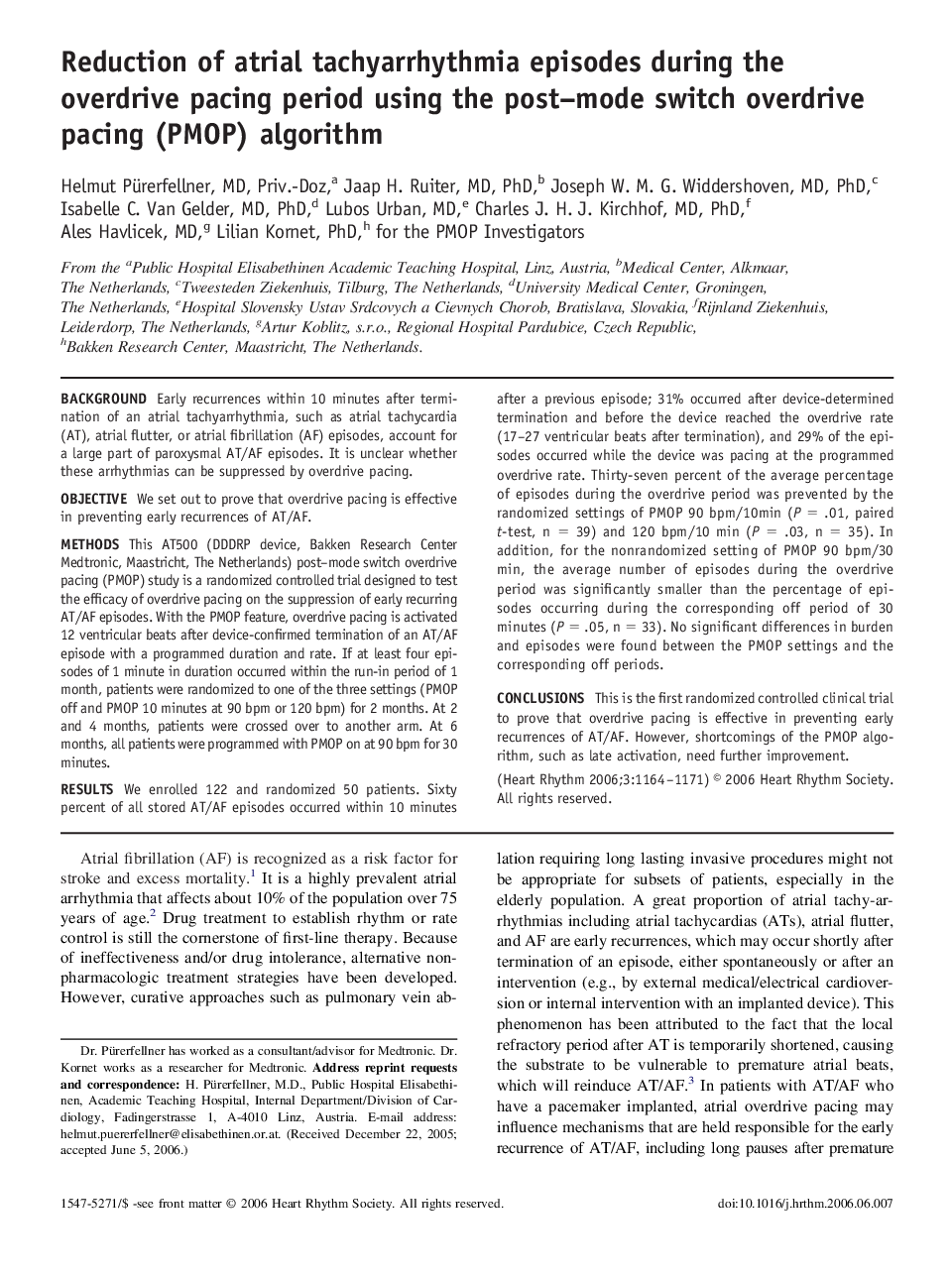| Article ID | Journal | Published Year | Pages | File Type |
|---|---|---|---|---|
| 2925171 | Heart Rhythm | 2006 | 8 Pages |
BackgroundEarly recurrences within 10 minutes after termination of an atrial tachyarrhythmia, such as atrial tachycardia (AT), atrial flutter, or atrial fibrillation (AF) episodes, account for a large part of paroxysmal AT/AF episodes. It is unclear whether these arrhythmias can be suppressed by overdrive pacing.ObjectiveWe set out to prove that overdrive pacing is effective in preventing early recurrences of AT/AF.MethodsThis AT500 (DDDRP device, Bakken Research Center Medtronic, Maastricht, The Netherlands) post–mode switch overdrive pacing (PMOP) study is a randomized controlled trial designed to test the efficacy of overdrive pacing on the suppression of early recurring AT/AF episodes. With the PMOP feature, overdrive pacing is activated 12 ventricular beats after device-confirmed termination of an AT/AF episode with a programmed duration and rate. If at least four episodes of 1 minute in duration occurred within the run-in period of 1 month, patients were randomized to one of the three settings (PMOP off and PMOP 10 minutes at 90 bpm or 120 bpm) for 2 months. At 2 and 4 months, patients were crossed over to another arm. At 6 months, all patients were programmed with PMOP on at 90 bpm for 30 minutes.ResultsWe enrolled 122 and randomized 50 patients. Sixty percent of all stored AT/AF episodes occurred within 10 minutes after a previous episode; 31% occurred after device-determined termination and before the device reached the overdrive rate (17–27 ventricular beats after termination), and 29% of the episodes occurred while the device was pacing at the programmed overdrive rate. Thirty-seven percent of the average percentage of episodes during the overdrive period was prevented by the randomized settings of PMOP 90 bpm/10min (P = .01, paired t-test, n = 39) and 120 bpm/10 min (P = .03, n = 35). In addition, for the nonrandomized setting of PMOP 90 bpm/30 min, the average number of episodes during the overdrive period was significantly smaller than the percentage of episodes occurring during the corresponding off period of 30 minutes (P = .05, n = 33). No significant differences in burden and episodes were found between the PMOP settings and the corresponding off periods.ConclusionsThis is the first randomized controlled clinical trial to prove that overdrive pacing is effective in preventing early recurrences of AT/AF. However, shortcomings of the PMOP algorithm, such as late activation, need further improvement.
